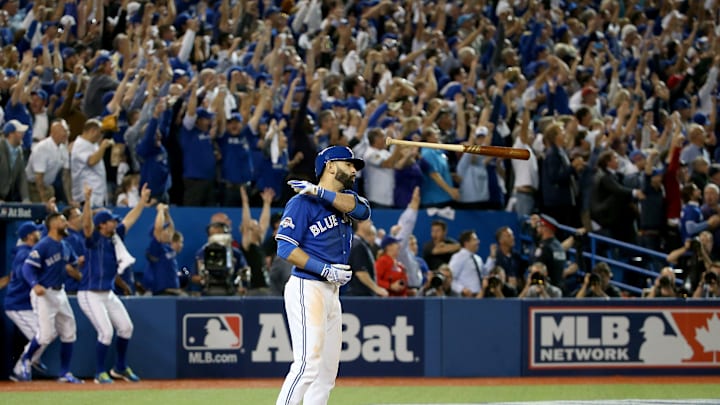2. Jesse Barfield (29.6 fWAR)
Barfield is perhaps the most beloved and remembered of the Blue Jays' pioneers, bursting onto the scene in 1981 and ultimately spending nine seasons with the club. Barfield, like many of his teammates, had a relatively late uptick to his career, spending four seasons with the Jays before breaking out in 1984.
Barfield was one of the best hitters in the franchise, combining for strong power and high contact rates. Barfield was also an extremely valuable defender, earning a pair of Gold Gloves during his tenure with the Blue Jays. He would eventually be traded to the Yankees in 1991 before leaving the league in '92 due to a spree of injuries. He ended his career in Japan with the Yomiuri Giants, but still left behind a big legacy in the bigs, remembered as a driving force that helped lead Toronto to its first division title.
Barfield's breakout year came in the year of the Jays' first division title in 1985. After missing out on consistent playing time the seasons previous, Barfield finally had the opportunity at 155 games in '85 - not disappointing in the slightest. He batted .289/.369/.536, with 27 homers and 84 RBI.
Barfield finished a respectable 7th in MVP voting that year, but it wasn't until the next season in 1986, however, that Barfield had his career year, cementing himself among the greats of the game. Barfield hit a league-high 40 big flies complemented with over 100 RBI, all while hitting a strong .289. Barfield also saw an uptick in defense that earned him his first Gold Glove award. This would all culminate in an 7.5 WAR season, an All-Star appearance and top-five MVP finish. By the time Barfield parted with the Jays, he had a Silver Slugger award, a pair of Gold Gloves and over 200 home runs.
